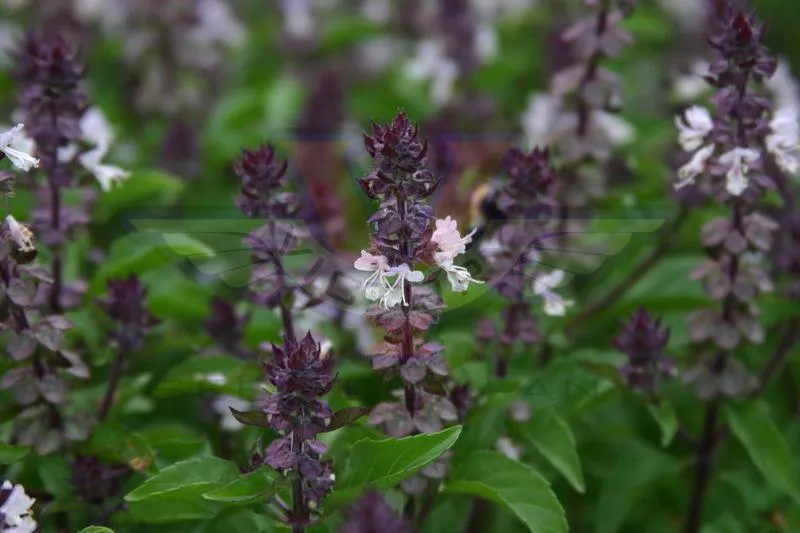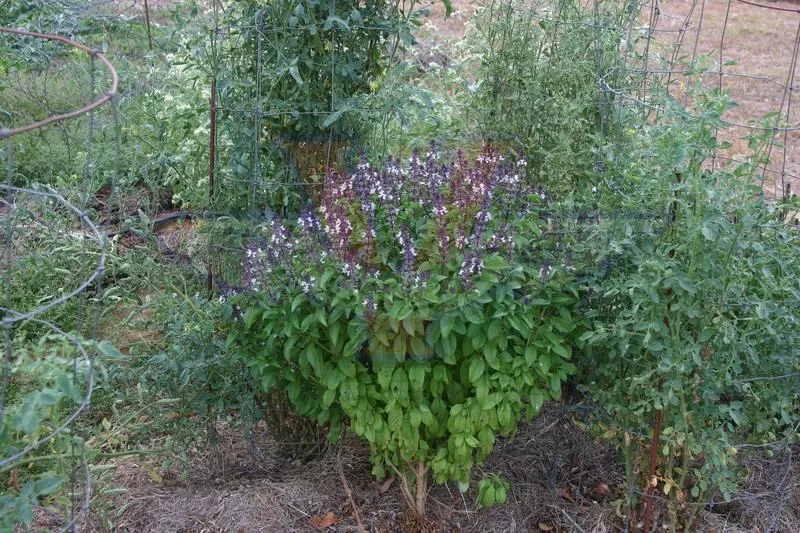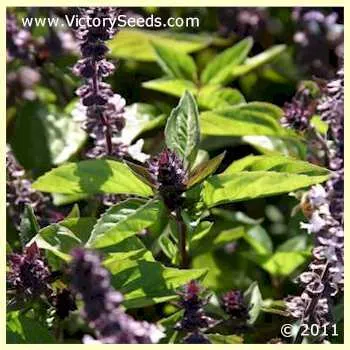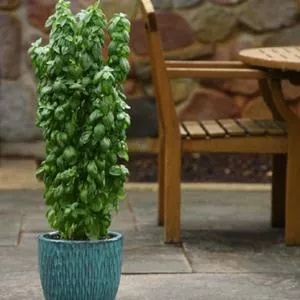


Basil, Cinnamon
Ocimum basilicum
Price: $3.45
SKU: 4000471Choose a variant:
70 days – 'Cinnamon Basil', also sometimes called 'Mexican Spice' basil, is a variety that grows eighteen to thirty inches tall and twelve to eighteen inches wide. The cinnamon scented leaves grow up to two inches long. The stems are purple with small purple flowers that are in bloom in the summer.
Along with being used in Mexican and Indian dishes, it can be added as an interesting flavor to recipes that call for basil. It can also be used in gardens as a companion plant to repel insect pests. Plant in well drained soil under full sun.
Along with being used in Mexican and Indian dishes, it can be added as an interesting flavor to recipes that call for basil. It can also be used in gardens as a companion plant to repel insect pests. Plant in well drained soil under full sun.
Planting Instructions:
Germination: 5 to 7 days
Planting Depth: 1/8 inch
Seed Spacing: 1 to 2 inches
Thinning Height: 2 inches
Spacing after Thinning: 12 inches
Days to Maturity: 75 to 85 days
This variety grows 18 to 30 inches tall and 12 to 18 inches wide. The cinnamon scented leaves grow up to two inches long. The stems are purple with small purple flowers that bloom in the summer.
Sow seeds indoors or directly into the garden after all danger of frost has passed. The plants should be spaced in rows eighteen inches apart or used in group plantings. Plant in well-drained soil under full sun.
The leaves are used fresh to make pesto, and can be dried and used as a seasoning.
Along with adding an interesting flavor to recipes that call for basil, it can be used in gardens as a companion plant to repel insect pests.
Germination: 5 to 7 days
Planting Depth: 1/8 inch
Seed Spacing: 1 to 2 inches
Thinning Height: 2 inches
Spacing after Thinning: 12 inches
Days to Maturity: 75 to 85 days
This variety grows 18 to 30 inches tall and 12 to 18 inches wide. The cinnamon scented leaves grow up to two inches long. The stems are purple with small purple flowers that bloom in the summer.
Sow seeds indoors or directly into the garden after all danger of frost has passed. The plants should be spaced in rows eighteen inches apart or used in group plantings. Plant in well-drained soil under full sun.
The leaves are used fresh to make pesto, and can be dried and used as a seasoning.
Along with adding an interesting flavor to recipes that call for basil, it can be used in gardens as a companion plant to repel insect pests.
Harvest, Storage and Using Your Basil
First thing in the morning, when the essential oils of the plants are most concentrated, harvest mature leaves. A dual purpose practice is to regularly pinch back the growing tips of your plants. These trimmings can be used in the kitchen and the pruning of the growing tips stimulates branching which will result in sturdy, bushier plants. Whatever your harvesting practice, do not reduce your plant's foliage by more than one-third and allow it to recover before harvesting from the same plant again. After harvesting and since basil is a leafy green plant, encourage growth by feeding a good, balanced fertilizer.
The essential oils (the components that provide the flavors and fragrance) are as noted previously, quite fragile. That is, they are easily lost. Harvesting at their peak in the morning is the first step but how you store it is also critical.
For long-term storage, basil leaves can be dried and used as seasoning. In fact, many recipes call for dried basil rather than fresh, as the flavor is more subtle and complimentary. However, the best way to store basil past the fresh use stage, while preserving full-flavor, is to do what Denise does. She takes the leaves and either chops them or runs them through the food processor. As quickly as possible, they are then placed into ice cube trays and frozen. Once solid, she removes them and either stores them in freezer bags or for longer term, in vacuum sealed bags. Then throughout the year we can thaw and enjoy "fresh" basil in dishes, drop a cube into sauce or soups, or make into pesto.
During the growing season, you can take your clippings, wrap the cut ends in a damp paper towel and store in a plastic bag in the refrigerator. They will last a week or two using this method but we generally either just go out and harvest what we need, fresh, or if it is a period where we have an abundance, process for long-term storage as described.
Customer Reviews:
Do you have experience with this one? 📝 📣 Write a review!
★★★★★ Lovely variety to companion plant.
By Rachel Lewis on February 6, 2015
By Rachel Lewis on February 6, 2015
Lovely variety to companion plant throughout the garden. An essential in anyone's system of integrated pest management. Best of all you can harvest a leaf or two of cinnamon basil to bake with while letting it remain at work in the veggies!







